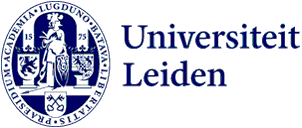
New research into hidden nature in our cities
What hidden nature is there in our cities and how can we use such organisms? This is what the HiddenBiodiversity project will be exploring over the next four years. The project’s kick-off meeting was held at the Hortus botanicus on Monday 26 September.
The project will open ‘the black box of hidden biodiversity,’ as Professor by Special appointment of Botanical Gardens and Botany of South East Asia Paul Keßler put it at the launch. The research will focus on organisms in cities that are more or less invisible or receive little attention.
Michael Stech, a researcher at Naturalis Biodiversity Center, is leading the project, which is a broad collaboration between partners including the Hortus, Delft University of Technology, VU Amsterdam and University of Applied Sciences Leiden. Stech: ‘There is biodiversity all over cities, in the air and underground too.’ Hundreds of species of fungi, bacteria, mosses, lichens and other organisms live in cities. ‘What they do and how we can use them is something we know very little about.’

Nature under threat
The Hortus has appointed PhD candidate Tim Claerhout for this project. He is researching how mosses and lichens on trees help make cities greener and more climate resistant. Claerhout: ‘Nature is under threat, particularly in urban areas. It is essential that we also protect smaller species like mosses and lichens. He will be conducting his research in Leiden, Amsterdam and Rotterdam.
President of the Executive Board, Annetje Ottow, noted how the research project ties in with the University’s Strategic Plan, the theme of which is ‘Innovating and Connecting.’ ‘It’s fantastic how everything we as a university stand for comes together in this project. It’s innovative, interdisciplinary research that we in Leiden consider vital. It is important to increase our impact and to do so with different partners. That’s what this project illustrates so well.’
Banner photo: Unsplash
Photo in text: Rosa Santpoort
